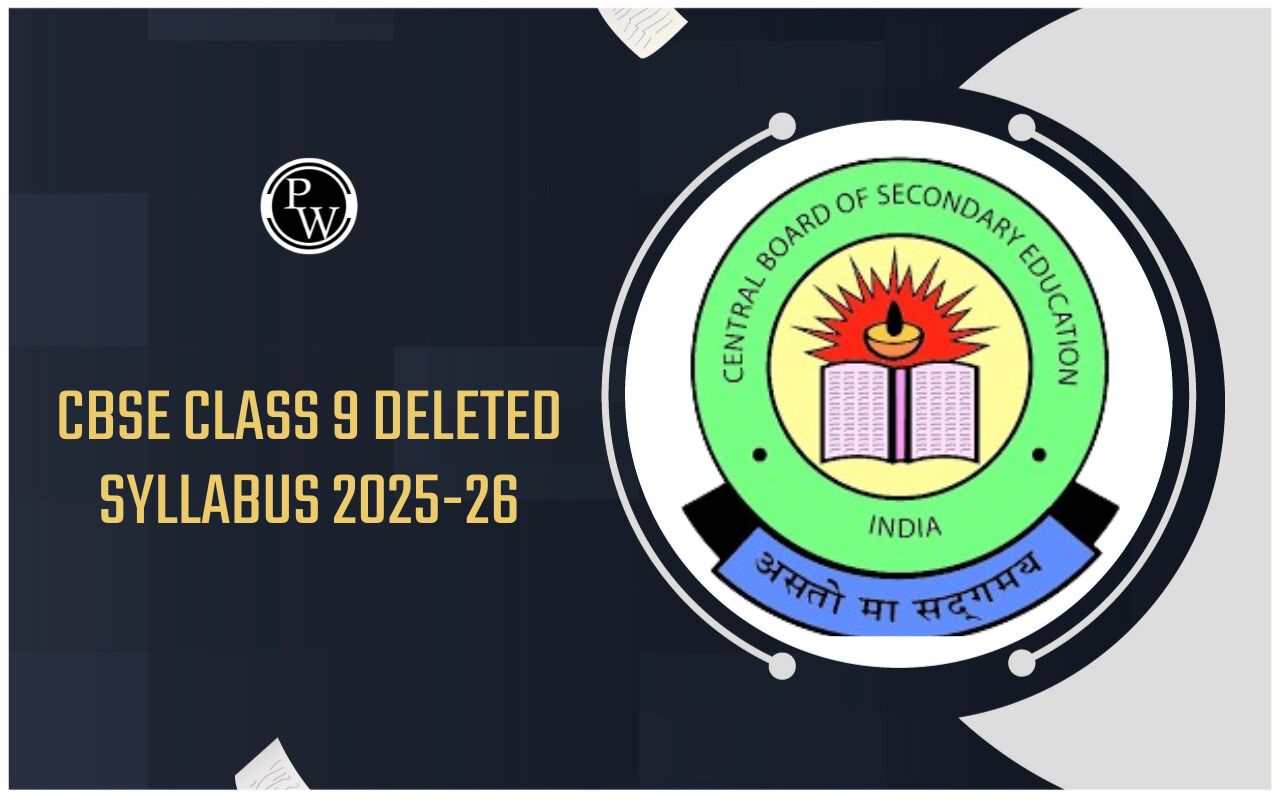
RD Sharma Solutions Class 9 Maths Chapter 1 Number System: RD Sharma Class 9 Solutions for Maths Chapter 1 on Number System provide comprehensive guidance to students in understanding fundamental concepts of numbers.
This chapter covers topics such as rational and irrational numbers, representation of numbers on the number line, and operations involving exponents. With step-by-step solutions to all exercises, students can easily grasp the concepts and strengthen their problem-solving skills. By utilizing RD Sharma Class 9 Solutions for Maths Chapter 1, students can enhance their understanding of the number system and prepare effectively for exams.CBSE Class 9 Science Syllabus 2024-25
RD Sharma Solutions Class 9 Maths Chapter 1 Number System PDF Download
The PDF link for RD Sharma Class 9 Solutions for Maths Chapter 1 on Number System is provided below. Students can easily download the PDF to access comprehensive solutions to all exercises in this chapter. This PDF has solutions to all the exercises in the chapter. It will help you understand numbers better and solve problems easily.RD Sharma Solutions Class 9 Maths Chapter 1 PDF Download
RD Sharma Solutions Class 9 Maths Chapter 1
The solutions for RD Sharma Class 9 Maths Chapter 1 are provided below. These solutions provide step-by-step explanations to help students understand the concepts thoroughly. By referring to these solutions, students can clarify doubts and improve their problem-solving skills. With comprehensive solutions available, students can strengthen their grasp of mathematical concepts and prepare effectively for exams.CBSE Class 10 Result 2024 Expected To Be Out Soon
RD Sharma Solutions Class 9 Maths Chapter 1 Exercise 1.1
Question 1: Is zero a rational number? Can you write it in the form p/q, where p and q are integers and q ≠ 0?
Solution:
Yes, zero is a rational number. It can be written in p/q form, provided that q ≠ 0. For example, 0/1 or 0/3 or 0/4 etc.RD Sharma Solutions Class 9 Maths Chapter 1 Ex 1.1 PDF Download
Question 2: Find five rational numbers between 1 and 2.
Solution:
We know that one rational number between two numbers m and n = (m+n)/2 To find: 5 rational numbers between 1 and 2 Step 1: Rational number between 1 and 2 = (1+2)/2 = 3/2 Step 2: Rational number between 1 and 3/2 = (1+3/2)/2 = 5/4 Step 3: Rational number between 1 and 5/4 = (1+5/4)/2 = 9/8 Step 4: Rational number between 3/2 and 2 = 1/2 [(3/2) + 2)] = 7/4 Step 5: Rational number between 7/4 and 2 = 1/2 [7/4 + 2] = 15/8 Arrange all the results: 1 < 9/8 < 5/4 < 3/2 < 7/4 < 15/8 < 2 Therefore required integers are, 9/8, 5/4, 3/2, 7/4, 15/8Question 3: Find six rational numbers between 3 and 4.
Solution :
Steps to find n rational numbers between any two numbers: Step 1: Multiply and divide both the numbers by n+1. In this example, we have to find 6 rational numbers between 3 and 4. Here n = 6 Multiply 3 and 4 by 7 3 x 7/7 = 21/7 and 4 x 7/7 = 28/7 Step 2: Choose 6 numbers between 21/7 and 28/7 3 = 21/7 < 22/7 < 23/7 < 24/7 < 25/7 < 26/7 < 27/7 < 28/7 = 4 Therefore, 6 rational numbers between 3 and 4 are 22/7, 23/7, 24/7, 25/7, 26/7, 27/7Question 4: Find five rational numbers between 3/5 and 4/5.
Solution:
Steps to find n rational numbers between any two numbers: Step 1: Multiply and divide both the numbers by n+1. In this example, we have to find 5 rational numbers between 3/5 and 4/5. Here n = 5 Multiply 3/5 and 4/5 by 6 3/5 x 6/6 = 18/30 and 4/5 x 6/6 = 24/30 Step 2: Choose 5 numbers between 18/30 and 24/30 3/5 = 18/30 < 19/30 < 20/30 < 21/30 < 22/30 < 23/30 < 24/30 = 4/5 Therefore, 5 rational numbers between 3/5 and 4/5 are 19/30, 20/30, 21/30, 22/30, 23/30Question 5: Are the following statements true or false? Give reasons for your answer.
(i) Every whole number is a natural number.
(ii) Every integer is a rational number.
(iii) Every rational number is an integer.
(iv) Every natural number is a whole number,
(v) Every integer is a whole number.
(vi) Every rational number is a whole number.
Solution :
(i) False.
Reason: As 0 is not a natural number.(ii) True.
(iii) False.
Reason: Numbers such as 1/2, 3/2, and 5/3 are rational numbers but not integers.(iv) True.
(v) False.
Reason: Negative numbers are not whole numbers.(vi) False.
Reason: Proper fractions are not whole numbers.RD Sharma Solutions Class 9 Maths Chapter 1 Exercise 1.2
Question 1: Express the following rational numbers as decimals. (i) 42/100 (ii) 327/500 (iii) 15/4
Solution:



RD Sharma Solutions Class 9 Maths Chapter 1 Ex 1.2 PDF Download
Question 2: Express the following rational numbers as decimals. (i) 2/3 (ii) -4/9 (iii) -2/15 (iv) -22/13 (v) 437/999 (vi) 33/26 Solution :
(i) Divide 2/3 using long division:

(ii) Divide using long division: -4/9
 (iii) Divide using long division: -2/15
(iii) Divide using long division: -2/15

(iv) Divide using long division: -22/13

(v) Divide using long division: 437/999

(vi) Divide using long division: 33/26

RD Sharma Solutions Class 9 Maths Chapter 1 Exercise 1.3
Question 1: Express each of the following decimals in the form p/q:
(i) 0.39
(ii) 0.750
(iii) 2.15
(iv) 7.010
(v) 9.90
(vi) 1.0001
Solution :
(i)
0.39 = 39/100(ii)
0.750 = 750/1000 = 3/4(iii)
2.15 = 215/100 = 43/20(iv)
7.010 = 7010/1000 = 701/100(v)
9.90 = 990/100 = 99/10(vi)
1.0001 = 10001/10000RD Sharma Solutions Class 9 Maths Chapter 1 Ex 1.3 PDF Download
Question 2: Express each of the following decimals in the form p/q:

Solution :
(i) Let x = 0.4̅
or x = 0.4̅ = 0.444 …. (1) Multiplying both sides by 10 10x = 4.444 …..(2) Subtract (1) by (2), and we get 10x – x = 4.444… – 0.444… 9x = 4 x = 4/9 => 0.4̅ = 4.9(ii) Let x = 0.3737.. …. (1)
Multiplying both sides by 100 100x = 37.37… …..(2) Subtract (1) from (2), and we get 100x – x = 37.37… – 0.3737… 100x – x = 37 99x = 37 x = 37/99(iii) Let x = 0.5454… (1)
Multiplying both sides by 100 100x = 54.5454…. (2) Subtract (1) from (2), and we get 100x – x = 54.5454…. – 0.5454…. 99x = 54 x = 54/99(iv) Let x = 0.621621… (1)
Multiplying both sides by 1000 1000x = 621.621621…. (2) Subtract (1) from (2), and we get 1000x – x = 621.621621…. – 0.621621…. 999x = 621 x = 621/999 or x = 23/37(v) Let x = 125.3333…. (1)
Multiplying both sides by 10 10x = 1253.3333…. (2) Subtract (1) from (2), and we get 10x – x = 1253.3333…. – 125.3333…. 9x = 1128 or x = 1128/9 or x = 376/3(vi) Let x = 4.7777…. (1)
Multiplying both sides by 10 10x = 47.7777…. (2) Subtract (1) from (2), and we get 10x – x = 47.7777…. – 4.7777…. 9x = 43 x = 43/9(vii) Let x = 0.47777….
Multiplying both sides by 10 10x = 4.7777…. …(1) Multiplying both sides by 100 100x = 47.7777…. (2) Subtract (1) from (2), and we get 100x – 10x = 47.7777…. – 4.7777… 90x = 43 x = 43/90RD Sharma Solutions Class 9 Maths Chapter 1 Exercise 1.4
Question 1: Define an irrational number.
Solution:
A number which cannot be expressed in the form of p/q, where p and q are integers and q ≠ 0. It is a non-terminating or non-repeating decimal.Question 2: Explain how irrational numbers differ from rational numbers.
Solution:
An irrational number is a real number which can be written as a decimal but not as a fraction i.e. it cannot be expressed as a ratio of integers. It cannot be expressed as terminating or repeating decimals. For example, √2 is an irrational number A rational number is a real number which can be written as a fraction, and as a decimal i.e. it can be expressed as a ratio of integers. It can be expressed as a terminating or repeating decimal. For example, 0.10 and 5/3 are rational numbersRD Sharma Solutions Class 9 Maths Chapter 1 Ex 1.4 PDF Download
Question 3: Examine whether the following numbers are rational or irrational:

Solution:
(i) √7
Not a perfect square root, so it is an irrational number.(ii) √4
A perfect square root of 2. We can express 2 in the form of 2/1, so it is a rational number.(iii) 2 + √3
Here, 2 is a rational number, but √3 is an irrational number. Therefore, the sum of a rational and irrational number is an irrational number.(iv) √3 + √2
√3 is not a perfect square, thus an irrational number. √2 is not a perfect square, thus an irrational number. Therefore, the sum of √2 and √3 gives an irrational number.(v) √3 + √5
√3 is not a perfect square, and hence, it is an irrational number Similarly, √5 is not a perfect square, and it is an irrational number. Since the sum of two irrational numbers is an irrational number, √3 + √5 is an irrational number.(vi) (√2 – 2) 2
(√2 – 2) 2 = 2 + 4 – 4 √2 = 6 – 4 √2 Here, 6 is a rational number but 4√2 is an irrational number. Since the sum of a rational and an irrational number is an irrational number, (√2 – 2)2 is an irrational number.(vii) (2 – √2)(2 + √2)
We can write the given expression as; (2 – √2)(2 + √2) = ((2) 2 − (√2) 2 ) [Since, (a + b)(a – b) = a 2 – b 2 ] = 4 – 2 = 2 or 2/1 Since 2 is a rational number, (2 – √2)(2 + √2) is a rational number.(viii) (√3 + √2) 2
We can write the given expression as; (√3 + √2) 2 = (√3) 2 + (√2) 2 + 2√3 x √2 = 3 + 2 + 2√6 = 5 + 2√6 [using identity, (a+b) 2 = a 2 + 2ab + b 2 ] Since the sum of a rational number and an irrational number is an irrational number, (√3 + √2) 2 is an irrational number.(ix) √5 – 2
√5 is an irrational number, whereas 2 is a rational number. The difference of an irrational number and a rational number is an irrational number. Therefore, √5 – 2 is an irrational number.(x) √23
Since, √23 = 4.795831352331… As the decimal expansion of this number is non-terminating and non-recurring, it is an irrational number.(xi) √225
√225 = 15 or 15/1 √225 is a rational number as it can be represented in the form of p/q, and q is not equal to zero.(xii) 0.3796
As the decimal expansion of the given number is terminating, it is a rational number.(xiii) 7.478478……
As the decimal expansion of this number is a non-terminating recurring decimal, it is a rational number.(xiv) 1.101001000100001……
As the decimal expansion of the given number is non-terminating and non-recurring, it is an irrational number.Question 4: Identify the following as rational or irrational numbers. Give the decimal representation of rational numbers:

Solution :
(i) √4
√4 = 2, which can be written in the form of a/b. Therefore, it is a rational number. Its decimal representation is 2.0.(ii) 3√18
3√18 = 9√2 Since the product of a rational and an irrational number is an irrational number. Therefore, 3√18 is an irrational number. Or 3 × √18 is an irrational number.(iii) √1.44
√1.44 = 1.2 Since every terminating decimal is a rational number, √1.44 is a rational number. And its decimal representation is 1.2.(iv) √9/27
√9/27 = 1/√3 Since the quotient of a rational and an irrational number is irrational numbers, √9/27 is an irrational number.(v) – √64
– √64 = – 8 or – 8/1 Therefore, – √64 is a rational number. Its decimal representation is –8.0.(vi) √100
√100 = 10 Since 10 can be expressed in the form of a/b, such as 10/1, √100 is a rational number. And its decimal representation is 10.0.Question 5: In the following equation, find which variables x, y, z etc. represent rational or irrational numbers:

Solution :
(i) x 2 = 5
Taking square root on both sides, x = √5 √5 is not a perfect square root, so it is an irrational number.(ii) y 2 = 9
y 2 = 9 or y = 3 3 can be expressed in the form of a/b, such as 3/1, so it is a rational number.(iii) z 2 = 0.04
z 2 = 0.04 Taking square root on both sides, we get z = 0.2 0.2 can be expressed in the form of a/b, such as 2/10, so it is a rational number.(iv) u 2 = 17/4
Taking square root on both sides, we get u = √17/2 Since the quotient of an irrational and a rational number is irrational, u is an Irrational number.(v) v 2 = 3
Taking square root on both sides, we get v = √3 Since √3 is not a perfect square root, so v is an irrational number.(vi) w 2 = 27
Taking square root on both sides, we get w = 3√3 Since the product of a rational and irrational is an irrational number, w is an irrational number.(vii) t 2 = 0.4
Taking square root on both sides, we get t = √(4/10) t = 2/√10 Since the quotient of a rational and an irrational number is an irrational number, t is an irrational number.| CBSE Class 9 Maths Syllabus | CBSE Class 9 Science Syllabus |
| CBSE Class 9 Computer Application Syllabus | CBSE Class 9 Social Science Syllabus |
RD Sharma Solutions Class 9 Maths Chapter 1 FAQs
What topics are covered in RD Sharma Class 9 Maths Chapter 1 on Number System?
How can RD Sharma Class 9 Solutions for Maths Chapter 1 help students?
Can RD Sharma Class 9 Solutions for Maths Chapter 1 be used for self-study?










